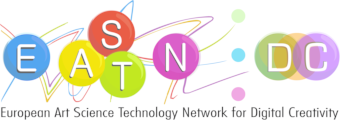Summary
The aim of this study is to present a specific type of tourism the “Religious Tourism”. The area where this study took place is in Konitsa, Greece. We propose a virtual reality application in order to depict/reconstruct the pilgrimage tour of “The steps of Saint Paisios”.
Abstract
Tourism deals with individuals’ or group activities that are related with the move and reside of persons to countries, places or areas outside their daily environment for leisure, business or other reasons. Tourism is a social, cultural and economic phenomenon. During the last decade Greece has organized another form of alternative tourism: the religious tourism and pilgrimage tours. This type of tourism is generated for the expression of special interests, needs and preferences of visitors. It is the intersection of tourist products and services which are different from the mass tourism by means of supply, organization and the human resources involved. It involves traveling to relatively remote, undisturbed natural areas with the objective of visiting religious monuments (monasteries, churches, countryside chapels, e.t.c.) worshiping, studying and participating in religious or cultural events, enjoying the scenery and its local communities with their cultural traditional attributes. Religion tourism deals with the travelling of people to a pilgrimage site based on their religious belief or interest. Due to its initial component, pilgrimage, it is often considered the oldest form of tourism, dating thousands of years back. Travels to the ancient holy places didn’t have today’s logistical support, but they had the same human motivation: faith, or at least other cultural interests. The most common purpose of religious tourism is to worship. Of course there are other reasons why travelers want to undertake this form of tourism and these maybe: gratitude and confession, spiritual salvation, celebrate religious events and communicate with other believers or local habitants.
In tourism, virtual reality can be used to capture tourism destinations in a unique and immersive way. Virtual reality involves placing people in heavily managed, artificial environments. This study presents the steps for a virtual reality religion tourism case. The case study concerns the pilgrimage tour “The steps of Saint Paisios of Konitsa”.
The first step is to design and to imprint the “The steps of Saint Paisios of Konitsa”, in Epirus Region. The main stops and worth-visiting religious monuments, cultural sightseeings and tourist sources are the following:
• Monastery of the Assumption of Virgin Mary (Molyvdoskepastos), with its church and some monks, placed just beside the Greek-Albanian borders where Saint Paisios used to visit
• Monastery of Taxiarhes (Goura), with a panoramic view to the cross of Aoos and Voidomatis rivers and the Greek-Albanian borders
• Old Bridge of Bourazani, with restaurant, café and hotel
• Museum/House of Saint Paisios, where he lived with his parents as refugees of Minor Asia (1922), with many personal belongings and writings
• Public Primary School of Konitsa, where he studied during his school-age as a child
• Chapel of Saint Barbara in Konitsa, where he used to visit and usually prayed in God
• Old Bridge of Konitsa over the banks of Aoos river with hotel, restaurant and café
• Touring route to Monastery of Panagia of Stomio at Aoos river’s gorge with marvelous places of environmental and esthetical value for walkers and climbers.
The second step in the process is to decide what content to be included in the virtual tour. We may expose many characteristic photos and main elements of information about the worth-visiting places and monuments of this pilgrimage tour, that are necessary to know any inside or foreign visitor/tourist.
After the simulation/execution of steps 1 and 2, a questionnaire has been applied to 150 individuals/participants in order to testify if this approach is acceptable or not and also to see what people/visitors are expecting from this special form of a religious tour, in order to respond to their preferences and demands. According to the results of the questionnaires step 1 and step 2 have been revised.
The third step is the suitably designed and structured software that will be used from the French Company “Polymorph”. The laboratory where this virtual application is going to be applied is in International Hellenic University – Department of Environmental Engineering.
Finally, the last step in this process is to ensure that the tour is updated regularly.
Back
“Reflections: Bridges between Technology and Culture, Physical and Virtual”
is supported by:






